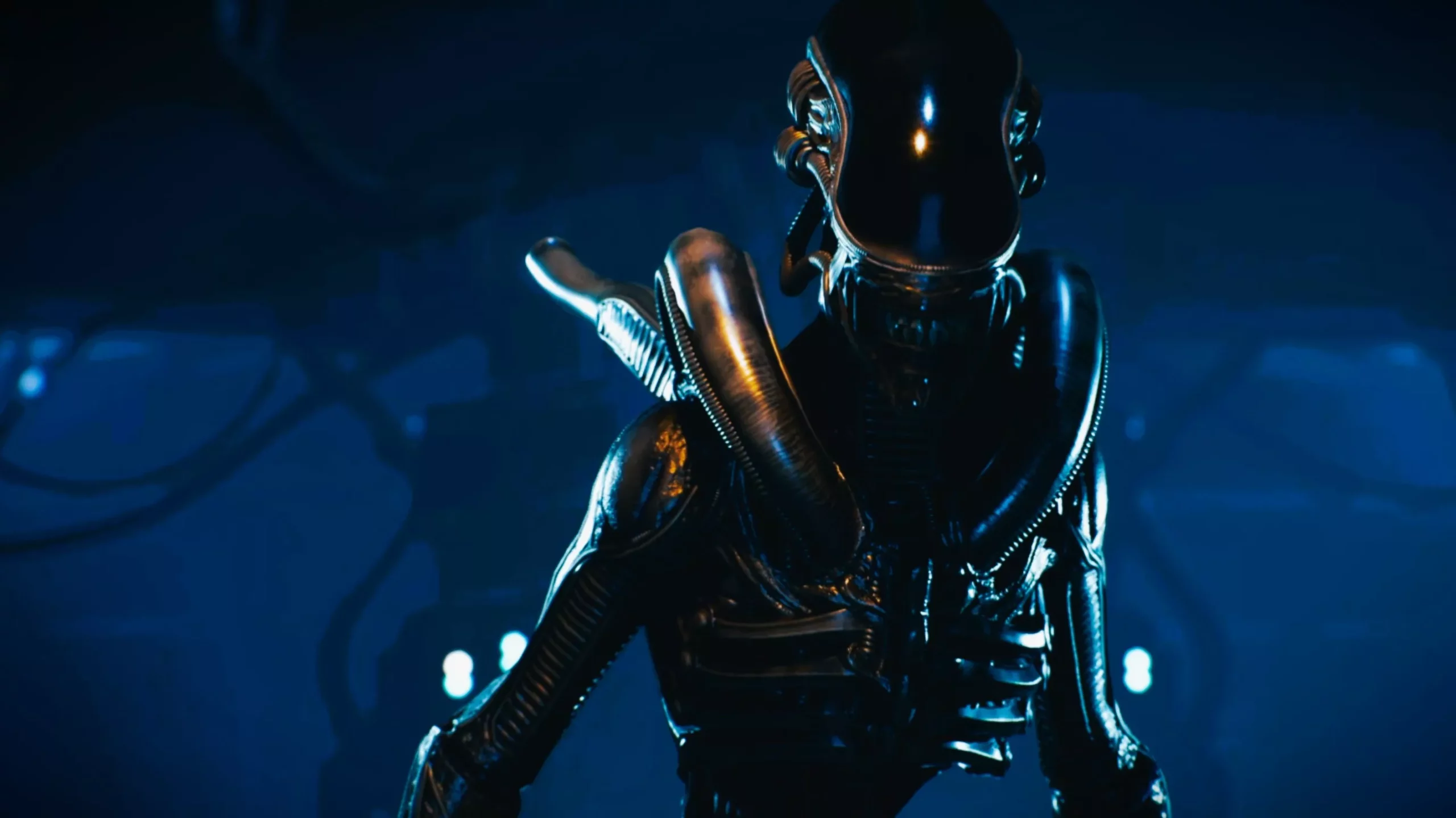Spot.Monster received an Xbox Series X review code for the game “Aliens: Dark Descent” and has provided this review. The game is currently available on various platforms, including PS4, PS5, Xbox One, Xbox Series X|S, and PC.
The “Alien” franchise has a long-standing connection with the video game industry, dating back to its first video game adaptation titled “Alien,” which was launched in 1982 for the Atari 2600. Over the years, the franchise has experienced both highs, such as the acclaimed “Alien: Isolation” with its terrifying AI-driven Xenomorph, and lows, like the disappointing “Aliens: Colonial Marines.”
In the latest addition to the franchise, “Aliens: Dark Descent,” players are immersed in a squad-based single player real-time strategy game. They assume the role of the crew aboard a crashed ship, comprising marines, doctors, and scientists, as they endeavor to escape the infested planet Lethe, overrun by Xenomorphs. The game challenges players to repair their ship, craft new equipment, rescue survivors, and lead teams of marines on high-stakes missions. With its well-balanced blend of “Aliens” lore and strategic gameplay, “Aliens: Dark Descent” is a delight for fans of the franchise and strategy game enthusiasts alike.
Revolutionizes the Franchise with Unique Gameplay
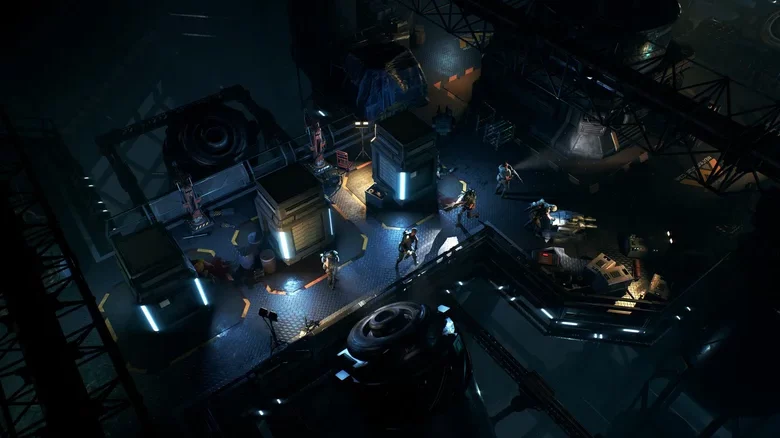
“Dark Descent” stands out among the numerous video game titles in the “Alien” franchise, offering a unique experience. It combines the squad management mechanics of “X-COM” with the real-time combat found in RPG titles like “Pillars of Eternity,” introducing new and terrifying aspects to the franchise.
When not engaged in missions, players have access to different sections of their crashed ship, the USS Otago. This hub area allows them to allocate resources for soldier training, facility repairs, equipment construction, and mission preparation. While “Dark Descent” may not possess the same depth or variety as games like “X-COM 2,” it successfully empowers players to approach playthroughs according to their own preferences. Additionally, it provides a respite from the tension of meticulous mission pacing, granting players the opportunity to catch their breath and proceed at their own pace without the constant threat of a Xenomorph attack.
During missions, players assume control of a four-member marine squad, engaging in real-time strategy sequences. Rather than individually maneuvering each unit across the map, players issue commands to the entire squad, allowing the game to assign tasks to specific soldiers. While this style of gameplay may require some adjustment, it ultimately enables players to control their squad effectively, without becoming overly preoccupied with managing each character’s actions.
“Dark Descent” Excels in Tense and Strategic Mission Gameplay
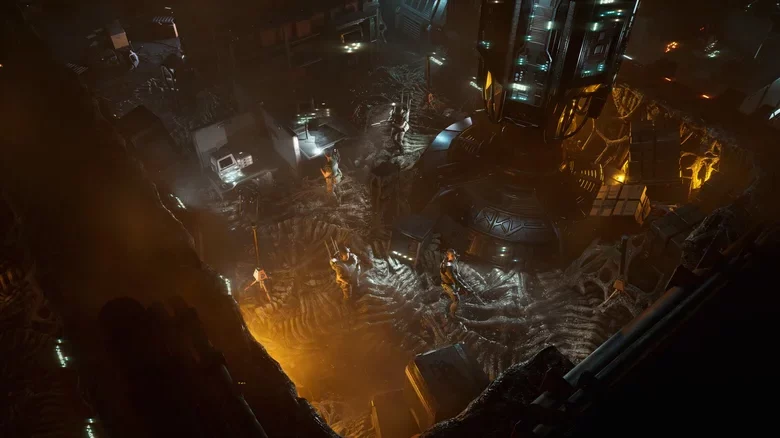
The true essence of “Dark Descent” lies in its thrilling mission experiences. The game’s approach to player control and strategy creates tension-filled scenarios that demand careful and methodical gameplay. It can be an unforgiving journey, especially when opting for the optional setting that limits players to just two autosaves throughout the entire playthrough.
During each mission, players must meticulously consider and balance various factors, including the condition of their marines, available supplies, equipment and skills, and the aggression levels of the Xenomorphs. With a multitude of elements constantly at play, the inability to pause the game adds further pressure, requiring players to make decisions swiftly and efficiently. Fortunately, “Dark Descent” features an extensive tutorial sequence that effectively explains every aspect players need to manage, while also offering numerous gameplay options to tailor the experience to individual preferences.
What truly distinguishes missions in “Dark Descent” is their immersive tone. As a survival horror game, it places players in intense situations where effective planning and resource management can provide a surge of satisfaction when successfully fending off hordes of attacking Xenomorphs. However, these victorious moments tend to be fleeting, as danger lurks around every corner, and the risk of being caught off guard is ever-present.
“Dark Descent” Nails the Authentic Tone and Aesthetics of the “Alien” Series
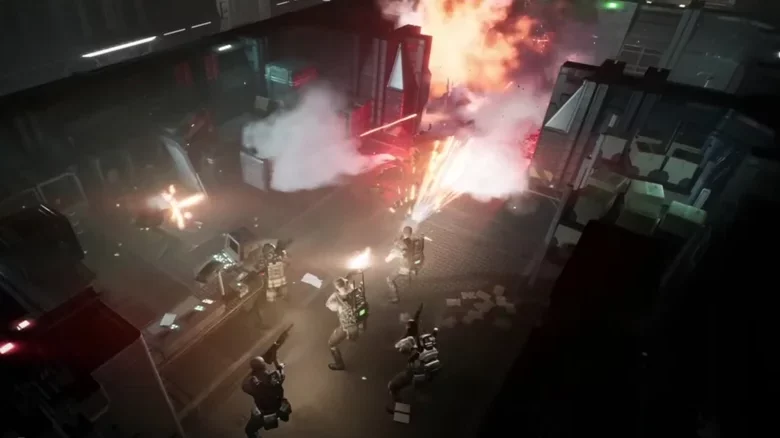
For ardent “Alien” enthusiasts, the news of “Dark Descent” successfully capturing the series’ tone and aesthetic elements will surely ignite excitement. The game’s environments, in particular, excel in this regard, featuring moody lighting, claustrophobic corridors, ubiquitous threatening vents, and the chunky designs reminiscent of classic science fiction. Every visual and auditory detail is meticulously crafted to deliver an authentic experience. Computer screens emit a green glow with chunky lettering, pulse rifles combine kinetic and electric feedback, and the sizzling sound of acid blood upon contact further adds to the immersion.
The pacing of “Dark Descent,” both in cutscenes and gameplay, perfectly aligns with the iconic style of the franchise. The introductory cutscene masterfully builds suspense, incorporating nods to iconic shots like a fragmented title card emerging piece by piece, and awe-inspiring images of colossal space stations overshadowed by celestial bodies. This carefully constructed opening sets the stage for the entire playthrough, instantly making fans feel right at home from the game’s very first moments.
“Dark Descent” Falls Short in Narrative Execution
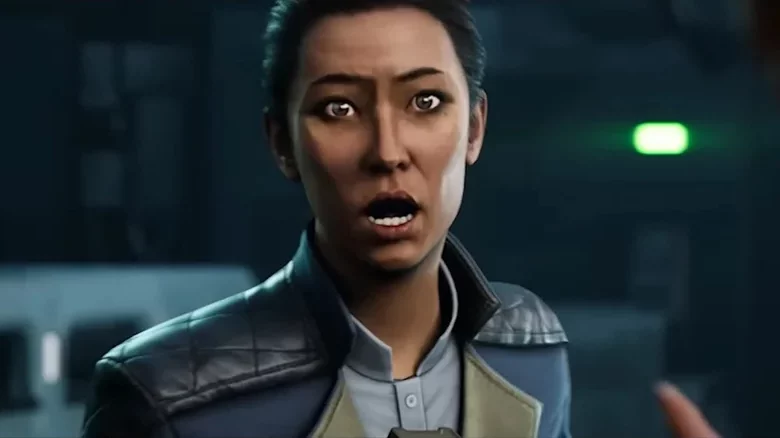
Regrettably, the weakest aspect of “Dark Descent” lies in its narrative, which serves as the foundation for its gameplay. While it incorporates callbacks to various elements from the series, such as a strong female protagonist and the pervasive shadow of corporate greed embodied by the Weyland-Yutani Corporation, it struggles to maintain a compelling storyline throughout the entire playthrough.
The story initially shows promise, effectively covering the fundamental aspects of the Xenomorphs in a way that quickly acquaints newcomers without tiring devoted fans. It avoids delving into the expanded lore and mythology of the “Alien” universe explored in films like “Alien: Covenant” and instead introduces its own unique elements. These include a Xenomorph-worshipping cult, corporate attempts to weaponize the lethal creatures, and a web of betrayals.
Unfortunately, there are numerous concepts at play that remain inadequately explained or hidden within text logs, making it difficult for most players to fully grasp what is happening. As a result, many may choose to disengage from the story altogether. Those who genuinely wish to appreciate the narrative will need to invest considerable effort in following it. Even then, the rewards mainly stem from intriguing ideas rather than engaging characters or the storytelling itself, particularly considering the game’s subpar facial animations.
Despite this narrative setback, “Aliens: Dark Descent” still manages to deliver a powerful experience, offering both fans and newcomers something to appreciate in this latest addition to the “Alien” video game catalog.

